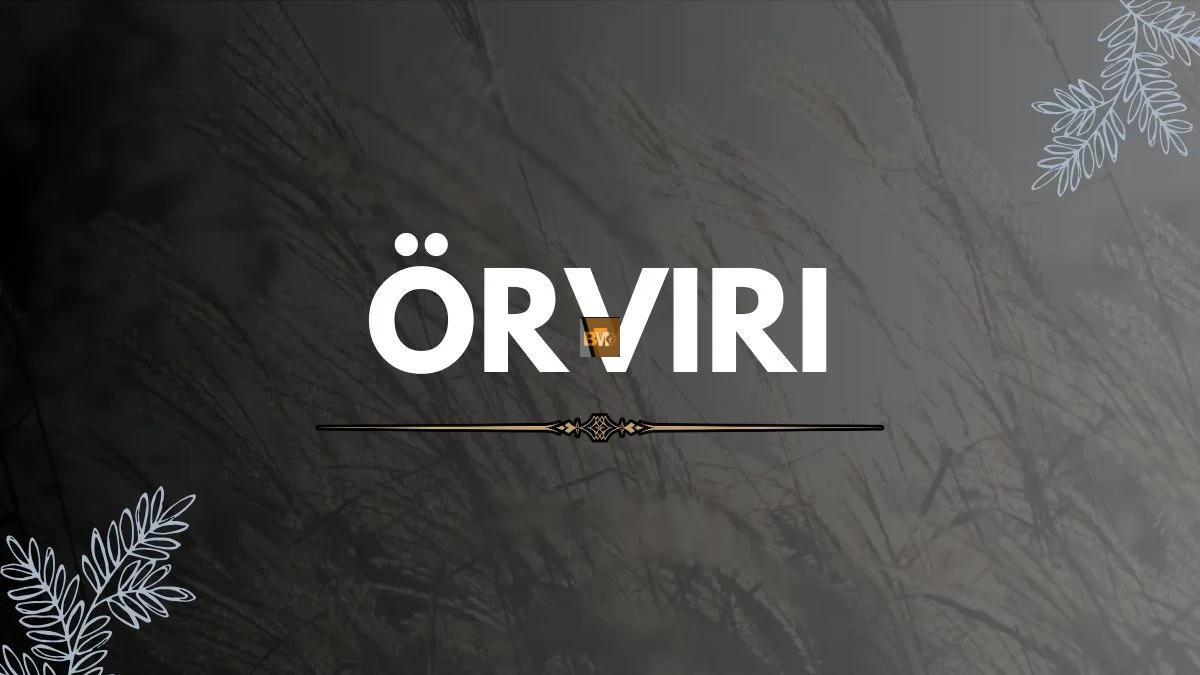Örviri is a term that holds profound meaning in Icelandic culture, folklore, and the human connection to nature. Though not easily translatable into English, it encapsulates an experience that combines awe, mystery, and a deep sense of spiritual belonging to the land. In this article, we will explore the origins, cultural implications, and modern relevance of örviri, shedding light on how it influences art, storytelling, and personal transformation.
Etymology and Linguistic Roots
The word örviri originates from the Icelandic language, a rich and ancient tongue that has remained largely unchanged for centuries. While there is no direct English equivalent, the term is often associated with a spiritual or emotional response to nature’s grandeur. Some scholars suggest that ör relates to something fleeting, spiritual, or ephemeral, while viri may be linked to vitality, flow, or life force. Together, örviri can be interpreted as a state of being overwhelmed by the beauty and power of nature, evoking a sense of unity with the earth.
Örviri in Icelandic Folklore
Icelandic folklore is replete with stories of elves (álfar), hidden people (huldufólk), and nature spirits that inhabit the land. The concept of örviri is deeply intertwined with these myths, as many Icelanders believe that certain places possess an ethereal energy.
For example, there are numerous tales of travelers who, upon encountering a remote waterfall, vast lava fields, or the dancing Northern Lights, feel an inexplicable presence or guidance. In some stories, those who experience örviri claim to see or hear unseen forces—whispers in the wind, shadows in the mist, or sudden insights that change their perspective on life.
One of the most famous legends involves a shepherd who wandered into a hidden valley, where he encountered beings who appeared otherworldly. They did not speak, yet he understood them. The experience left him forever changed, giving him knowledge of healing herbs and an innate ability to predict the weather. This story is often cited as an example of örviri—a moment of supernatural enlightenment brought on by nature’s power.
Örviri and the Natural Landscape
Iceland’s dramatic landscape—characterized by volcanoes, glaciers, geysers, and fjords—provides the perfect setting for the experience of örviri. The raw, untamed beauty of the land has a way of evoking deep emotions, often described as a mixture of reverence, humility, and transcendence.
Many visitors to Iceland report feeling an overwhelming sense of awe when standing before the mighty waterfalls of Gullfoss or Dettifoss. Others speak of a dreamlike state when witnessing the green and violet hues of the Northern Lights sweeping across the sky. These moments—where one feels both insignificant and deeply connected to something greater—are at the heart of örviri.
The Influence of Örviri on Icelandic Art and Literature
The concept of örviri has long influenced Icelandic art, music, and literature. Many Icelandic authors, from medieval sagas to contemporary fiction writers, capture the mystical relationship between humans and nature.
For instance, the Edda, a collection of Old Norse poems and myths, frequently describes moments where warriors, seers, and wanderers encounter divine revelations through nature. Similarly, modern Icelandic authors like Sjón and Andri Snær Magnason weave elements of örviri into their storytelling, using nature as both a setting and a character that influences human fate.
Icelandic musicians, such as Björk and Sigur Rós, also capture the feeling of örviri in their compositions. Their music often carries an ethereal quality, inspired by the sounds of nature—wind, water, and echoes from the mountains. These artists channel the profound emotions associated with Iceland’s landscapes, allowing listeners to experience a form of örviri through sound.
Visual artists in Iceland, from painters to photographers, also strive to capture the ephemeral beauty that defines örviri. Many focus on portraying the surreal light conditions of the Icelandic seasons—endless summer daylight and winter darkness punctuated by the Northern Lights.
Örviri in Contemporary Society
In modern Iceland, örviri continues to shape national identity, environmental consciousness, and the way people interact with their surroundings. Many Icelanders still believe in the presence of hidden beings, and construction projects are sometimes altered to avoid disturbing areas thought to be inhabited by them. This respect for the land reflects a broader cultural attitude of environmental stewardship.
The concept of örviri also aligns with Iceland’s commitment to sustainability. The country harnesses renewable energy sources, such as geothermal and hydropower, to minimize its environmental impact. Many Icelanders view their responsibility to protect nature as more than a practical necessity—it is a spiritual duty that honors the connection between humans and the land.
Tourism has also contributed to a renewed awareness of örviri. Many visitors come to Iceland in search of moments that evoke a sense of wonder, whether through hiking in remote highlands, bathing in geothermal hot springs, or experiencing the midnight sun. Guided storytelling tours and eco-tourism initiatives help educate visitors on Iceland’s folklore and the cultural significance of the land.
Experiencing Örviri for Yourself
For those seeking to experience örviri, several practices can enhance the connection to nature and the Icelandic spirit:
-
Mindful Travel: Instead of rushing from one tourist attraction to another, take time to fully absorb the scenery. Let yourself feel the vastness of the landscape and listen to its natural sounds.
-
Hiking in Remote Areas: Iceland is home to some of the most breathtaking hiking trails in the world. Walking through lava fields, alongside glacial rivers, or across moss-covered hills can heighten the feeling of örviri.
-
Observing the Night Sky: The Northern Lights, or Aurora Borealis, are one of the most awe-inspiring natural phenomena. Watching the lights dance across the sky can be a profoundly moving experience that embodies the essence of örviri.
-
Engaging with Folklore: Learning about Icelandic myths and legends can provide deeper insight into the cultural significance of örviri. Many of these stories illustrate how humans have historically understood their relationship with nature.
-
Practicing Solitude in Nature: Spending time alone in the wilderness—without technology or distractions—can help foster a sense of inner peace and connection with the earth.
Conclusion
Örviri is more than just a word—it is an experience, a cultural philosophy, and a spiritual connection to nature. It represents the feeling of being small yet deeply interconnected with the vastness of the world. Whether through Icelandic folklore, art, or personal experiences in the natural landscape, örviri continues to shape the way Icelanders—and those who visit their land—see the world.
In an age where modern life often distances people from nature, embracing the spirit of örviri can serve as a reminder of the beauty, mystery, and power that exists all around us.

